Battles Without Honor and Humanity (Japanese: ?????? Hepburn: Jingi Naki Tatakai), also known in the West as The Yakuza Papers, is a Japanese yakuza film series produced by Toei Company. Inspired by a series of magazine articles by journalist K?ichi Iiboshi that are based on memoirs originally written by real-life yakuza K?z? Min?, the films detail yakuza conflicts in Hiroshima Prefecture.
| Battles Without Honor and Humanity | |
|---|---|
Screenshot from the first installment of the series, featuring the title against the atomic bombing of Hiroshima. | |
| Films and television | |
| Film(s) |
|
| Audio | |
| Original music | "Battle Without Honor or Humanity" |
Five films directed by Kinji Fukasaku and starring Bunta Sugawara as Shozo Hirono, who was based on Min?, were produced between 1973 and 1974. They were both critically and commercially successful and popularized the subgenre of yakuza film called Jitsuroku eiga, which are often based on true stories. Fukasaku directed an additional three standalone films under the New Battles Without Honor and Humanity title between 1974 and 1976. Three more films by different directors were produced in 1979, 2000 and 2003.
Screenplay
The Jingi Naki Tatakai series of articles written by K?ichi Iiboshi that began in Weekly Sankei (?????? Sh?kan Sankei) magazine in 1972, are rewrites of a manuscript originally written by K?z? Min? (ja:????) while he was in prison. Min? led his own yakuza family associated with the Yamamura-gumi before being arrested in 1963. While incarcerated in Abashiri Prison he wrote his memoir and upon being released in 1970, retired from the yakuza life. His memoir tells the story of what is commonly called the Hiroshima Strife (ja:???? Hiroshima K?s?), that took place between 1950 and 1972.
Several yakuza groups were involved, the most well-known being the Yamaguchi-gumi and Kyosei-kai. In the films, the Yamamura-gumi became the Yamamori family, the Min?-gumi became the Hirono family, the Tsuchioka-gumi became the Doi family, the Yamaguchi-gumi became the Akashi family, the Honda-kai became the Shinwa Group, and the Kyosei-kai became the Tensei Coalition.
Kazuo Kasahara, screenwriter of the first four films, told Toei he could work with the incidents in Kure, but not the events that followed in Hiroshima City because they were too complicated and the studio agreed. He developed the original film around the story of yakuza underboss Tetsuhiko Sasaki, who rebelled against future Kyosei-kai leader Tatsuo Yamamura and was killed. Sasaki became the character Tetsuya Sakai.
Because he did not know the whole story yet as Iiboshi's articles were still being published and did not want to make another ensemble piece like the first installment, for the second film Deadly Fight in Hiroshima Kasahara decided to tell the dramatic story of hitman Mitsuji Yamagami. Yamagami became the character Shoji Yamanaka.
With the successful release of the first film, Toei demanded that Kasahara finally write about the Hiroshima war and split it into two films; Proxy War and Police Tactics. The writer had purposely avoided that part of the story for the first two installments, not only because he was daunted by all the names and relationships that were presented in a complex way, but also because he would have to write about the Yamaguchi-gumi and was concerned about the agreements he made to the people involved in the incidents. On a visit to Kure, Kasahara met the mother of Masahiro ?nishi, who was the model for Hiroshi Wakasugi in the first film. She told him her son could finally rest in peace thanks to the movie. The writer then created the Proxy War characters Takeshi Kuramoto and his mother after this encounter.
The Final Episode is the only film in the pentalogy not written by Kasahara. Instead the screenplay was written by Koji Takada. Kasahara was supportive of Takada, giving him all the research materials he had created for the first four films. However, he said there was not enough material for a fifth film and Takada admitted the research ended up not being very useful for his story. Takada said this was because the characters had to become a "respectable" organization throughout Western Japan by the end. Kasahara suggested not to use the character played by Kinya Kitaoji because it was based on a real yakuza boss that Takada met in Hiroshima (Kyosei-kai leader Hisashi Yamada), but Takada disregarded the advice. Takada said that the real yakuza later saw the film and caused problems with the studio.
Fukasaku biographer and film expert Sadao Yamane and Kenta Fukasaku both agreed that the series does not focus on specific lead actors, but is an ensemble piece with the supporting actors energizing it. The stars are narrative characters, with the low-ranking yakuza that are endlessly killed off the real focus of the movies.
Kazuo Kasahara claimed he envisioned Bunta Sugawara portraying the character Tetsuya Sakai while writing and later learned that Sugawara had already been cast in the role. However, he said the day before shooting Sugawara was instead cast as Shozo Hirono (based on Min?) and Hiroki Matsukata took over as Sakai. Nobuo Kaneko is the only other actor to portray the same character across all five films; playing Yoshio Yamamori based on Tatsuo Yamamura, who became the first leader of the Kyosei-kai.
A group of bit actors and drinking buddies dubbed the Piranha Army (ja:?????? Piranha Gundan) portrayed many different small and physical roles throughout the series. Takuzo Kawatani and Hideo Murota being the most prominent members. Kawatani, Masaru Shiga and non-Piranha Army member Seiz? Fukumoto competed to see who could have the most over the top death scenes. In group scenes, they would hide in the back during rehearsals, only to move to the front during the actual take. Shiga said that Fukasaku was the only director they treated as equals.
Upon filming on-location in Kure, many yakuza, including those used as models for characters in the film, gathered on set. They gave advice to both the director and actors; decades later, Tatsuo Umemiya stated that he felt sorry for actors playing yakuza today because they "don't have the chance to get to know real yakuza the way we did." Producer Koji Shundo himself was formerly a yakuza before getting a job at Toei.
Set in post-war Japan, Fukasaku drew on his experiences as a child during World War II for Battles Without Honor and Humanity. At fifteen he worked with other children in a munitions factory that was regularly bombed. The director recalled "even though we were friends working together, the only thing we would be thinking of was self-preservation. We would try to get behind each other or beneath dead bodies to avoid the bombs.... I also had to clean up all the dead bodies.... I'm sure those experiences have influenced the way I look at violence." Using hand-held camera, zoom lenses and natural lighting to create a "gritty, chaotic look," the director showed his generation's struggle to survive in the post-war chaos. The shaky camera technique has since become a trademark of the director.
Toei producer Masao Sato remarked that unusually Fukasaku shot the films in Toei's Kyoto studio, despite being under contract to Toei Tokyo. He also stated that the entire filming process for the first movie was short, hectic and chaotic, taking only 35 to 40 days. Actor Takashi Noguchi said that although Fukasaku would be given a one-month deadline, he always went over it taking 50 or 60 days. There were also a lot of night shoots, with any work after 10pm earning the Toei crew significant overtime pay. The assistant director on Proxy War and Police Tactics, Toru Dobashi, claimed that Fukasaku was not as sharp in the mornings, napping while the crew prepped, usually only filming the first take in the afternoon. He said that the director's peak work hours were between 2 and 3am. Dobashi remarked that Fukasaku was very hands-on, taking part in location scouting and costume selection. While he let the actors choose their costumes, he needed to know the reason why and would have lengthy discussions with them on how it helped their character's development.
The series' action director Ryuzo Ueno said that for on-location shooting, he suggested to Fukasaku that they rehearse in studio beforehand. This way the citizens seen on film are giving realistic reactions to the street fights. After the second film, the anti-crime unit of the police in Hiroshima said they would not support on-location shooting. The production team for the third movie had a hard time filming in Etajima with the officials saying they "gave the wrong impression of Hiroshima by depicting violent incidents that never happened." Kasahara responded by stating that he did not write any fictional violent acts, all of them were real.
Ueno recalled that Kawatani almost died filming a scene in the second film where he is pulled behind a boat with his hands tied together. The actor went against Ueno's advice and insisted his hands actually be tied. After almost drowning, he did it Ueno's way. Shiga claimed that Sugawara was not as skilled as the Piranha Army in staged fights and would accidentally hit them for real. Dobashi described an incident filming a night scene in Proxy War, where Tsunehiko Watase performed a dangerous stunt himself in a single take that was filmed on a 16 mm film Eyemo to be blown up to 35 mm film later. However, it was later discovered that the Eyemo had no film in it and the scene had to be shot over after pleading with the location's residents.
Battles Without Honor and Humanity was a box office success and made Sugawara a star and Fukasaku an A-list director. The first installment earned its distributor $4.5 million at the box office, making it the eleventh highest-grossing film of the year. The second and third films ranked twelfth and thirteenth for the same year, respectively, while the last two both ranked in the top ten of 1974.
On Kinema Junpo's annual list of the best films for the year of 1973 as voted by critics, the first film placed second, Proxy War placed eighth and Deadly Fight in Hiroshima thirteenth. At the 1974 Kinema Junpo Awards; the first installment won the Reader's Choice for Best Film (Deadly Fight in Hiroshima was fourth), Bunta Sugawara received Best Actor, and Kazuo Kasahara received Best Screenplay. In 2009, the magazine named it fifth on an aggregated list of the Top 10 Japanese Films of All Time as voted by over one hundred film critics and writers. Previous editions of the list had the series at number twenty-two in 1995 and eighth in 1999, tied with Twenty-Four Eyes. In 2011, Complex named it number one on their list of The 25 Best Yakuza Movies.
Yamane believes Battles Without Honor and Humanity was popular because of the time of its release; Japan's economic growth was at its peak and at the end of the 1960s the student uprisings took place. The young people had similar feelings to those of the post-war society depicted in the films. The Fukasaku biographer and film expert also stated that for the rest of his career Fukasaku was approached many times by producers to create movies similar to Battles, but always turned them down wanting to move on to films he found interesting. Mark Schilling wrote that many Japanese commentators cite the films' extensive use of the Hiroshima dialect as fresh, because it was not heard in many mainstream films at the time.
The success of the Battles Without Honor and Humanity series popularized the subgenre of yakuza film called Jitsuroku eiga or "actual record films", often depicting events based on true stories. Prior, movies about yakuza were known as Ninky? eiga or "chivalry films" and set in pre-war Japan. The A.V. Club's Noel Murray states that Fukasaku's yakuza instead only "adhere to codes of honor when it's in their best interest, but otherwise bully and kill indiscriminately." Dennis Lim of The Village Voice writes "Fukasaku's yakuza flicks drain criminal netherworlds of romance, crush codes of honor underfoot, and nullify distinctions between good and evil."
Kyle Anderson of the Nerdist referred to Battles Without Honor and Humanity as "the fastest, most frenetic, least apologetic gangster pictures ever made." He noted how the onscreen text giving the victim's name and date of death after each murder, coupled with the handheld photography, give the films a "newsreel style that draws the viewer in."

Request Movie Now
Watch movie Battles Without Honor And Humanity online on Amazon
Watch movie Battles Without Honor And Humanity online
Watch The Movie On PrimeTahaan Full HD Movie Download

Billo Badshah Full HD Movie Download
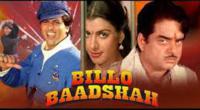
Meri Biwi Ka Jawab Nahin Full HD Movie Download

Sapnay Full HD Movie Download
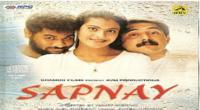
Dancer Full HD Movie Download

Maahir Full HD Movie Download
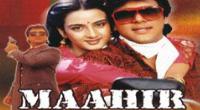
Key Club Full HD Movie Download

Jaanbaaz (1986) Full HD Movie Download
.jpg)
Chak Jawana Full HD Movie Download
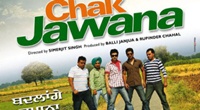
One Man Army-Gulami Full HD Movie Download
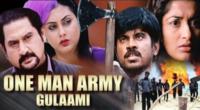
The Killing Jar Full HD Movie Download

We Married Margo Full HD Movie Download

Viduakathai Full HD Movie Download
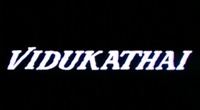
Chikkadu Dorakadu Full HD Movie Download
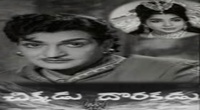
Batman Begins Full HD Movie Download

Oceans Twelve Full HD Movie Download

Anjaneyulu Full HD Movie Download
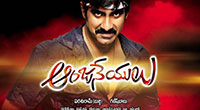
Nimisham Full HD Movie Download
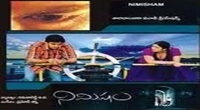
Ayanagaru Full HD Movie Download
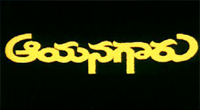
Sanchalanam Full HD Movie Download

Jagat Khiladi Full HD Movie Download
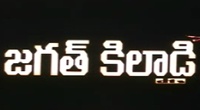
Download latest Movie from bollywood
- 1> baaghi 3
- 2> THE SKY IS PINK MOVIE FULL STORY AND REVIEW
- 3> Luka Chuppi
- 4> TO ALL THE BOYS I’VE LOVED BEFORE
- 5> Kabir Singh
- 6> Street Dancer 3D
- 7> Simmba
- 8> Gone Girl
- 9> The Girl Who Lived
- 10> Ludo
- 11> DILWALE DULHANIA LE JAYENGE
- 12> GUILTY
- 13> The Godfather
- 14> Adventures of Rusty
- 15> Sooryavanshi
- 16> Satyameva Jayate 2
- 17> Thappad
- 18> Bhool Bhulaiyaa 2
- 19> KGFChapter 2
- 20> Mardaani 2
- 21> Pinjar
- 22> Shivaji maharaj
- 23> Ek Villian 2
- 24> Hungama 2
- 25> Divergent
- 26> Mumbai Saga
- 27> The Internship
- 28> HIT (telugu)
- 29> Panga
- 30> The perfect date
- 31> 16 December
- 32> Gopala Gopala (Telugu)
- 33> Brahmastra
- 34> Gangubai Kathiawadi
- 35> Manmadhudu
- 36> Nenu local
- 37> Mahanati
- 38> Shatamanam bavathi
- 39> Lagaan
- 40> After
- 41> MOM
- 42> Shamshera
- 43> Raguvaran BTech
- 44> Khakee
- 45> The villain
- 46> OM
- 47> Mr. perfect
- 48> Bueatifull mind
- 49> Hichki
- 50> Gabbar Singh
- 51> Jogi
- 52> Before Sunrise
- 53> Before Sunset
- 54> Before Midnight
- 55> The Big Bull
- 56> Top Gun: Maverick
- 57> The Purge
- 58> The Sky is Pink
- 59> Laxmmi Bomb
- 60> Sadak 2
- 61> Sufna
- 62> Prithviraj
- 63> PK
- 64> Coolie No 1(2020)
- 65> Black Widow
- 66> Dear Zindagi
- 67> Dil Bechara
- 68> PHIR HERA PHERI
- 69> WAR
- 70> Dostana
- 71> RRR: Roudram Ranam Rudhiram
- 72> Maidan
- 73> Dabbang 3
- 74> Chhalaang
- 75> life as we know it
- 76> SherShaah
- 77> Sandeep Aur Pinky Faraar
- 78> Event Horizon
- 79> 83
- 80> Radhe: Your Most Wanted Bhai
- 81> Gunjan Saxena: The Kargil Girl
- 82> Mr India
- 83> Vivah
- 84> Anokha Bandhan
- 85> Ghost
- 86> Bhoot: Part One - The Haunted Ship
- 87> Haseen Dilruba
- 88> Laal Singh Chaddha
- 89> Qismat
- 90> Rajput
- 91> Drive
- 92> Dil Chahta Hai
- 93> Dil Ki Baazi
- 94> Dil Ka Rishta
- 95> Teesri Manzil
- 96> Dil
- 97> Love Aaj Kal
- 98> Khaali Peeli
- 99> Bunty Aur Babli 2
- 100> Atrangi Re
- 101> Gulabo Sitabo
- 102> Jodi
- 103> Suraj Pe Mangal Bhari
- 104> Deewana
- 105> Attack
- 106> Sardar Udham Singh
- 107> Toofan
- 108> THE LOVEBIRDS
- 109> Jersey
- 110> Ginny Weds Sunny
- 111> Thalaivi
- 112> Shiddat
- 113> Angels vs Zombies
- 114> Koi Mil Gya
- 115> Thank God
- 116> Bhuj: The Pride of India
- 117> Hum Aapke Hain Kaun
- 118> The Platform
- 119> Bird Box
- 120> Roohi Afzana
- 121> Torbaaz
- 122> Nikamma
- 123> World War Z
- 124> Extraction
- 125> Train to Busan
- 126> Life of Pi
- 127> SHAADI MEIN JROOR AANA
- 128> Himmat Aur Mehnat
- 129> To All The Boys: P.S. I Still Love You
- 130> Mimi
- 131> Good Newwz
- 132> Shubh Mangal Zyada Saavdhan
- 133> Raabta
- 134> Harry Potter and the Philosopher's Stone
- 135> Harry Potter and the Chamber of Secrets
- 136> Chhapaak
- 137> War of the Worlds
- 138> Harry Potter and the Prisoner of Azkaban
- 139> Harry Potter and the Goblet of Fire
- 140> MURDER MYSTERY
- 141> Shakuntala Devi
- 142> Bachchan Pandey
- 143> Jayeshbhai Jordar
- 144> Sheer Qorma
- 145> Saina
- 146> 'O' Pushpa I hate tears
- 147> Kedarnath
- 148> MS Dhoni The Untold Story
- 149> Chhichhore
- 150> Badhaai Ho
- 151> Unstoppable
- 152> Oz the Great And Powerful
- 153> The Girl on the Train
- 154> Haathi Mere Saathi 2020
- 155> The Conjuring: The Devil Made Me Do It
- 156> Gandhi Se Pehle Gandhi
- 157> The Song of Scorpions
- 158> Srimanthudu
- 159> Hello Guru Prema Kosame
- 160> Beauty and The Beast
- 161> Black Panther
- 162> Charlie and the Chocolate Factory
- 163> Bole Chudiyan
- 164> Fidaa
- 165> Duvvada Jagannadham
- 166> Bruce Lee: The Fighter
- 167> Hyper
- 168> Yaara
- 169> Red (2020)
- 170> Shivam
- 171> That Is Mahalakshmi
- 172> Nishabdham
- 173> Aashram 2020 web series
- 174> Laxmii
- 175> Mismatched
- 176> STUDENT OF THE YEAR 2
- 177> NAIL POLISH
- 178> Ramprasad Ki Tehrvi
- 179> KAAGAZ
- 180> 12 o Clock
- 181> The Power
- 182> bolo hau
- 183> Tribhanga
- 184> JAMUN
- 185> Madam Chief Minister
- 186> Maasaab
- 187> Aadhaar
- 188> Tanhaji
- 189> Bhaagi 3
- 190> Bhootnath
- 191> MALANG
- 192> Jai Mummy Di
- 193> Haathi Mere Saathi 2021
- 194> Shakeela
- 195> Unpaused
- 196> Annayya
- 197> Vamsoddharakudu
- 198> Mrugaraju
- 199> Narasimha Naidu
- 200> Sankranti
- 201> Manasu Maata Vinadhu
- 202> Anjaane
- 203> Apaharan
- 204> Bachke Rehna Re Baba
- 205> Bewafaa
- 206> Roohi
- 207> Radhe
- 208> Zindagi Khoobsoorat Hai
- 209> Yeh Mohabbat Hai
- 210> Yeh Kya Ho Raha Hai?
- 211> The Tomorrow War
- 212> DehradunDiary
- 213> Meri Shaadi Karaoo
- 214> Matruu Ki Bijlee Ka Mandola
- 215> No One Killed Jesica
- 216> Aag Ka Goola
- 217> Eight Million Dollars
- 218> Three Hundred
- 219> Cats and Dog
- 220> Decoy
- 221> Gold Rush
- 222> You Have Got Mail
- 223> Final Destination three
- 224> Tofan
- 225> Jungle
Request for Download movie Battles Without Honor And Humanity
- Bollywood movies
- Latest Bollywood movies
- Download all bengali movies
- Download all bhojpuri movies
- Download all english movies
- Download all gujarati movies
- Download all hindi movies
- Download all kannada movies
- Download all malayalam movies
- Download all marathi movies
- Download all oriya movies
- Download all punjabi movies
- Download all tamil movies
- Download all telugu movies
- Bollywood action movies
- Bollywood adventure movies
- Bollywood animation movies
- Bollywood classical movies
- Bollywood comedy movies
- Bollywood crime movies
- Bollywood devotional movies
- Bollywood documentary movies
- Bollywood drama movies
- Bollywood family movies
- Bollywood fantasy movies
- Bollywood historical movies
- Bollywood history movies
- Bollywood horror movies
- Bollywood musical movies
- Bollywood mystery movies
- Bollywood mythological movies
- Bollywood patriotic movies
- Bollywood romance movies
- Bollywood romantic movies
- Bollywood sci-fi movies
- Bollywood social movies
- Bollywood spiritual movies
- Bollywood sports movies
- Bollywood suspense movies
- Bollywood thriller movies
- Bollywood war movies
- Hot actress list
- Hot gujarati actress list
- Hot tamil actress list
- Hot bhojpuri actress list
- Hot assam actress list
- Hot bihari actress list
- Hot jammu and kashmir actress list
- Hot gujarati actress list
- Hot haryana actress list
- Hot konkani actress list
- Hot marathi actress list
- Hot odia actress list
- Hot punjabi actress list
- Hot rajasthani actress list
- Hot kannada actress list
- Hot malayalam actress list
- Hot telugu actress list
- Hot tulu actress list
- Hot Actress list from Indian city
- Hot actress list from ahmedabad
- Hot actress list from alappuzha
- Hot actress list from bangalore
- Hot actress list from bangalore
- Hot actress list from bhopal
- Hot actress list from chandigarh
- Hot actress list from chennai
- Hot actress list from guwahati
- Hot actress list from hyderabad, india
- Hot actress list from indore
- Hot actress list from jaipur
- Hot actress list from kannur
- Hot actress list from kochi
- Hot actress list from kolkata
- Hot actress list from kollam
- Hot actress list from kottayam
- Hot actress list from kozhikode
- Hot actress list from lucknow
- Hot actress list from madurai
- Hot actress list from mangalore
- Hot actress list from mumbai
- Hot actress list from mysore
- Hot actress list from new delhi
- Hot actress list from patna
- Hot actress list from pune
- Hot actress list from thiruvananthapuram
- Hot actress list from thrissur
- Hot actress list from tiruchirappalli
- Hot actress list from vijayawada
- Hot actress list from visakhapatnam
- All Bollywood Movies
- Bollywood Celeb
- >Art Director
- >Audiography
- >Background Music
- >Banner
- >Choreographer
- >Cinematographer
- >Costume Designer
- >Dialogue Writer
- >Director
- >Distributor
- >Editor
- >Executive Producer
- >Hair Stylist
- >Lyricist
- >Music Director
- >Photographer
- >Playback Singers
- >Presenter
- >Producer
- >Production Company
- >Production Designer
- >Screenplay
- >Singer
- >Sound
- >Actor
- >Story Writer
- >Studio
- >Video Director
- >Miscellaneous
- >Publicity (pro)
- >Web Creator
- >Production Labs
- >Publicity Design
- >Publicity Stills
- >Writer
- >Miscellaneous Artists
- >Visual Effects
- >Reporter
- >Music Company
- >Shooting Studios
- >Picturised On
- >Line Producer
- >Co Producer
- >Asst Director
- >Casting Director
- >Cinematography
- >Choreography
- >Dialouge
- >Editing
- >Lyrics
- >Music
- >Story
- >Playback Singer Female
- >Playback Singer Male
- >Actor In A Comic Role (male/female)
- >Child Artiste
- >Ensemble Cast
- >Actor Popular Choice (male)
- >Actor Popular Choice (female)
- >Sa Re Ga Ma Pa Song Of The Year
- >Actor In Supporting Role
- >Actress In Supporting Role
- >Actor In Leading Role
- >Art Direction
- >Actress In Leading Role
- >Sound Recording
- >Costume Design
- >Special Effects
- >Action
- >Actor In A Negative Role
- >Lifetime Achievement Award
- >Cinematic Exellence (director)
- >Cinematic Exellence (male)
- >Cinematic Exellence (female)
- >International Male Icon
- >International Female Icon
- >Actor In A Supporting Role (male)
- >Actor In A Supporting Role (female)
- >Actor In A Comic Role
- >Playback Singer (male)
- >Playback Singer (female)
- >Most Promising Debut (female)
- >Most Promising Debut (male)
- >Most Promising Director
- >Sound Design
- >Lifetime Jodi
- >Marketed Film
- >Jury Award For Best Actor
- >Jury Award For Best Actress
- >Jury Award For Best Film
- >Jury Award For Best Director
- >Playback Singer(male)
- >Lifetime Acheivement Award (male)
- >Excellence Award
- >Jodi Award
- >Performer Of The Year
- >Presented By
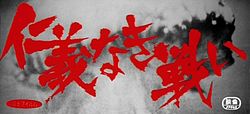 Story of movie Battles Without Honor And Humanity :
Story of movie Battles Without Honor And Humanity :